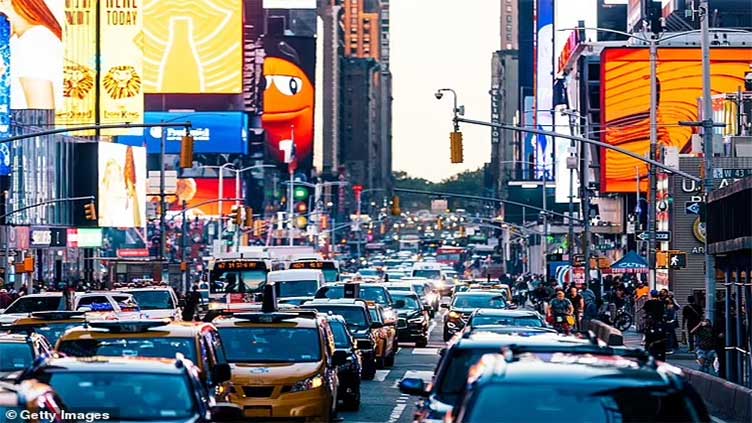Study claims adding fourth traffic light colour could reduce congestion

Technology
Researchers say adding a white signal could reduce wait times by 25 per cent
(Web Desk) - There's nothing more annoying than sitting in a traffic jam, watching the clock tick away.
But the days of getting stuck in congestion could be a thing of the past - if cities added a fourth colour to their traffic lights.
That's according to researchers from North Carolina State University, who found that delays at junctions could be reduced by more than 25 per cent by adding a 'white' signal.
Instead of simply stopping or going, this signal would tell autonomous vehicles to figure out their own way across while human drivers simply follow the car in front.
Co-author Dr Ali Hajbabaie said: 'This improves travel time, fuel efficiency and safety for all of the cars on the road.'
The idea of a white signal relies on the assumption that, one day, a large number of vehicles on the road will be autonomous.
Since autonomous vehicles (AVs) are able to communicate with each other and the traffic infrastructure, they should be able to work together to create the most efficient traffic flow.
However, since AVs are only in their infancy, it is likely that a large number of vehicles will remain human-operated for the foreseeable future.
To ensure that both human and robot drivers can make it to their destination quickly and safely, the researchers have suggested a fourth traffic light signal.
As it stands, our familiar traffic light can only tell people to stop, get ready for the lights to change or go.
Under this new system, once the traffic light detects that there are enough AVs at the junction it will switch to a white signal.
Dr Hajbabaie says that this 'taps into the computing power of AVs in order to expedite traffic at intersections.'
The autonomous cars themselves figure out which lanes should go and lead 'platoons' or humans through the junction.
Once the light turns white, humans simply follow the car in front of them, which is either an AV or another human also following an AV further up in the group.
Since the system only turns on when enough AVs are at the junction, no human should ever get stuck at the front of a group while the white light is active.
Importantly, this system only gets more efficient as the number of AVs increases.
The concept of a fourth white signal is not entirely new, having been proposed in 2020, but this study is the first to consider whether it could work alongside pedestrian crossings.
Under the new system, pedestrians would cross the road as normal by following a red-light/green-light system.
The only difference is that, when the white light is active, the pedestrian crossing would work as part of the network of autonomous vehicles to produce the optimal flow.
By simulating a four-way junction, the researchers discovered that wait times could be reduced by 27 per cent even when accounting for pedestrians.
This figure is calculated for a scenario of near-universal AV adoption, but Dr Hajbabaie says that there would still be 'meaningful improvements' with lower AV adoption.
Dr Hajbabaie says: 'We found that, when pedestrians are added into the mix, the white phase concept still improves traffic efficiency for everyone.
'And, again, the higher the percentage of traffic that is made up of AVs, the more efficiently traffic moves through intersections.'
This development wouldn't just make journeys quicker, it could also make cities less polluted.
It is believed that exposure to nitrogen dioxide, largely from road transport, is thought to be behind 38,000 new cases of asthma in the UK and 240,000 in the US each year.
And studies have found that motorists breathe in 40 per cent more pollutants while sitting at traffic lights.
By reducing the amount of time spent idling at lights, cities could cut down on emissions by easing congestion.
However, a fourth traffic light colour is unlikely to be coming to your city any time soon.
The researchers say they are aware that governments will not be implementing these technologies in the near future.
However, they say they are already taking steps to ensure that any future tests will be effective and safe.
Dr Hajbabaie says that the team have already created a physical model to test their theory - although the cars in this model are small enough to hold in your hands.
'This will help us identify challenges in implementation without the expense – and safety risk – involved with using full-scale vehicles,' he added.
'In the meantime, we are open to working with industry and research partners to explore ways to move forward with these technologies.'



